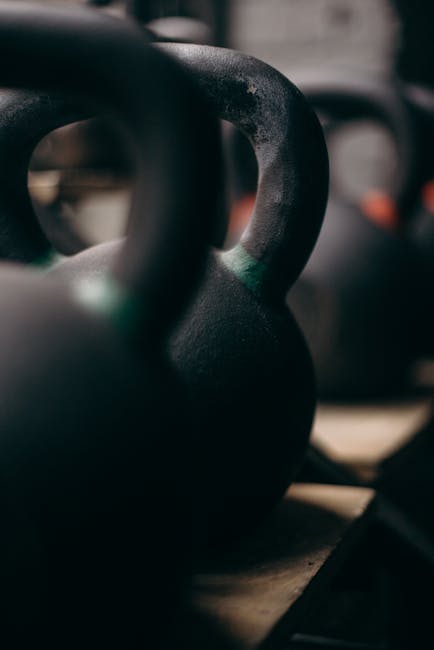Looking to ramp up your weight lifting game but worried that pesky hernia might ruin everything? Fear not my fellow gym rat! While a hernia may seem like a daunting obstacle, with the right safety measures and precautions, you can still hit those iron plates like a champ. In this article, we’ll delve into the do’s and don’ts of weight lifting with a hernia, and uncover some cheeky tips that might just save your bacon (or herniated intestine, as it were). So, strap on your lifting belt, adjust your protein shake to the right temperature, and let’s get flexing!
Contents
- 1 1. Understanding Hernia and its Impacts on Weight Lifting
- 2 2. Consultation with a Medical Practitioner: A Primary Step
- 3 3. Starting Small: The Importance of Gradual Progression in Weight Lift
- 4 4. Strengthening the Core: The Key to Safe Weight Lifting with Hernia
- 5 5. Weight Lifting Forms and Techniques to Avoid with Hernia
- 6 Flex Your Muscles, Not Your Hernia
1. Understanding Hernia and its Impacts on Weight Lifting
Hernia and its Impacts on Weight Lifting
So you’re all pumped up to max out your deadlifts, but there’s one thing holding you back: your hernia. For those of you who don’t know what a hernia is, let me give you a quick rundown. A hernia is when an internal organ, like your intestine, pushes through a weak spot in your muscle or tissue. Ouch!
Now, you might be asking yourself, “How does a hernia impact my weight lifting?” Well, my friend, let me tell you. When you lift heavy weights, you put a lot of pressure on your abdominal muscles. And if you have a hernia, that pressure can cause your internal organs to pop out of place. Trust me, it’s not a pretty sight.
- Tip 1: Don’t try to be a hero. If you feel any pain or discomfort, stop immediately. Your health is way more important than that extra rep.
- Tip 2: Talk to your doctor. They’ll be able to advise you on what exercises to avoid and how to properly care for your hernia.
- Tip 3: Focus on other exercises. Just because you can’t do deadlifts doesn’t mean you can’t work on other muscles. Get creative and try new things!
So there you have it, folks. Hernias are no joke, so listen to your body and be mindful when lifting weights. Remember, a little caution goes a long way, and you don’t want to end up with a belly full of organs!

2. Consultation with a Medical Practitioner: A Primary Step
So, you think you’re a doctor now because of all those hours you’ve spent on Google diagnosing yourself, right? Wrong! The truth is, consulting with a medical practitioner is the primary step to take when you’re not feeling well.
But what if you’re terrified of doctors? Don’t worry, we’ve got you covered. Here are some tips to ease your fears:
- Remember, doctors are people too (albeit highly educated ones). They won’t judge you or think any less of you for seeking help.
- Bring a friend or family member with you for moral support – just make sure they don’t do all the talking!
- Take deep breaths and remind yourself that this is for your own good.
Once you’ve made the appointment, it’s important to be prepared. Make a list of all your symptoms, questions, and concerns ahead of time so you don’t forget anything. And don’t be afraid to speak up – your doctor is there to help you, but they can’t do so effectively if you don’t give them all the information they need.
3. Starting Small: The Importance of Gradual Progression in Weight Lift
We all know how tempting it is to start lifting heavy weights as soon as we step inside the gym. But, let me tell you something sister/brother, slow and steady wins the race! In this section, we’re going to dive into the importance of starting small and gradually progressing in your weight lifting journey.
First things first, you need to avoid lifting weights that are too heavy for you. We don’t want any injuries now, do we? It’s vital to start with a weight that you can comfortably lift and perform proper form, then gradually increase the load as your body adapts to the new challenge. Trust me; it’s better to have a steady and healthy progression than to try and lift the same weight as The Rock on day one.
Starting small also means creating a workout plan that works best for your current fitness level. Don’t get caught up in the cool and flashy weightlifting routines you see online and in magazines. Stick to the basics, like the bench press, deadlifts, and squats, and slowly incorporate other exercises as you build your strength. Remember, we’re in this for the long haul, and success comes with a well-designed plan that includes gradual progression.
4. Strengthening the Core: The Key to Safe Weight Lifting with Hernia
Strengthening the Core: The Key to Safe Weight Lifting with Hernia
If you think you can’t lift weights because you have a hernia, then think again! With the right technique and a strong core, you can lift all the weights you desire safely, without worrying about your hernia popping out to say hello to the world. So, how do you strengthen your core?
- Planks: Planks are a killer exercise for the core, but they are an even bigger buzz kill for your excuses. All you need to do is get into a push-up position, but instead of bending your arms and lowering your body, you hold yourself up in a straight line. Start with 30 seconds and work up to a minute or more.
- Deadbugs: Deadbugs may sound like something you squash in your garden, but they are actually a great exercise for your abs and are easy on the spine. Lie flat on your back with your arms extended straight up and your knees bent at a 90-degree angle. Slowly lower one arm and the opposite leg towards the floor, and then return to the starting position. Repeat on the other side.
- Sit-ups: Sit-ups may be old school, but they still get the job done. Make sure you engage your abs and exhale as you lift yourself up, and don’t let your hernia do the heavy lifting. Keep your head and shoulders off the ground throughout the exercise.
So, there you have it. Strengthen your core and make your hernia feel like a distant memory. Now, go forth and lift weights with confidence! Just don’t forget to wear a belt and, for the love of all that is good, please don’t hold your breath.
5. Weight Lifting Forms and Techniques to Avoid with Hernia
If you’ve ever had a hernia, you know how painful it can be. The last thing you want is to aggravate it further by using improper weightlifting techniques. Here are a few forms and techniques to avoid when you have a hernia:
- The Deadlift: It’s called deadlift for a reason – you don’t want to end up dead (or in pain) because of it. The pressure this exercise puts on your abdominal muscles is too much for a hernia to handle. It’s best to avoid this form altogether.
- The Squat: Squats are great for your legs, but not-so-great for your hernia. The pressure on your pelvic floor can make your hernia worse. You don’t want to be caught with your pants down in public, so skip this form and opt for leg presses instead.
- The Clean and Jerk: This workout is tough on your body, even for those who don’t have a hernia. But if you do have one, it’s best to avoid this technique altogether. The sudden jerking motion can cause serious damage and might leave you feeling like a jerk.
If you’re looking for alternatives, try some seated exercises or focus on one specific muscle group at a time. Remember, it’s better to be safe than sorry. You want to be able to lift weights for years to come, not just a few sessions. So, put your hernia first and avoid these weightlifting forms and techniques.
Flex Your Muscles, Not Your Hernia
Well, well, well, we’ve arrived at the end of our article. But you know what they say, all good things must come to an end, just like your hernia if you don’t lift weights the right way. We know you’re eager to chase after those gains, but you don’t want to end up with a bulge in the wrong place. Remember, safety always comes first.
So keep in mind the dos and don’ts of weight lifting with hernia, and always listen to your body. If you feel like your hernia is about to play peek-a-boo, it’s time to take a break. And lastly, don’t be too hard on yourself because even if your abs aren’t six-packs, you still are a winner in our hearts.
Stay safe, stay strong, and always remember, lifting weights is cool but not if you mess up your hernia.








Leave A Comment